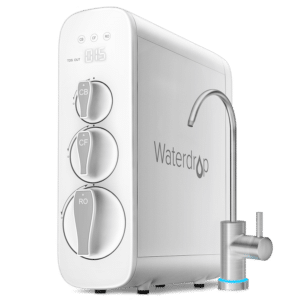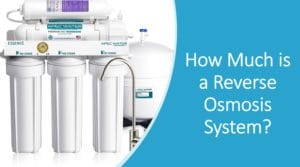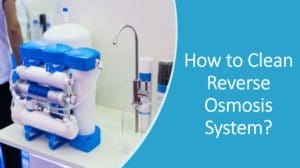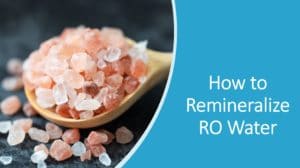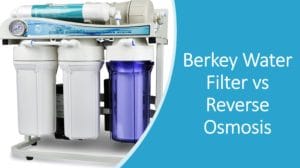Reverse osmosis is one of the most common water purification methods used in residential water filtering systems.
A common question people ask when thinking about buying a reverse osmosis water system is: what is the Ph of RO water.
This article will clear up any doubts you may have about the Ph of reverse osmosis water.
The Ph of Reverse Osmosis Water
The Ph of reverse osmosis water is within the healthy Ph level of 5-7. When reverse osmosis water is exposed to air, its Ph level drops to 5-5.5, still within the healthy range. The drop occurs because water has an appetite and absorbs CO2 from the air.
It takes about an hour for exposed reverse osmosis water to drop from a Ph of 7 to 5.5 or lower. Within an hour of being exposed to air, a glass of reverse osmosis water falls from a Ph of 7 to 5.5. RO produces safe, high-quality water that often tastes better than tap water.
According to the Environmental Protection Agency, water with a Ph between 6.5 and 8.5 is safe to drink.
Is Reverse Osmosis Water Acidic?
The simple answer is yes; reverse osmosis water is acidic. To understand what this means, it’s important to know what we mean when referring to acidity. Acidity and alkalinity are opposites. The higher a beverage’s Ph, the higher its alkalinity. The lower a beverage’s Ph, the higher its acidity.
The Ph scale is logarithmic, with each digit portraying a 10-fold increase in acidity or alkalinity compared to the previous digit. Thus, reverse osmosis water with a Ph of 6.0 is ten times more acidic than unfiltered water with a Ph of 7.0. To put this into context, it’s a good idea to look at the Ph levels of other common beverages.
- Lemon Juice, vinegar: Ph=2
- Orange Juice, soda: Ph=3
- Beer, tomato juice: Ph=4
- Black Coffee, soft drinking water Ph=5
As you can see, many liquids we consume daily have a much higher acidity than reverse osmosis water. Is RO water acidic? The answer is yes, but it’s not excessively acidic when compared to the liquids most of us consume daily.
Why Is Reverse Osmosis Water Acidic?
Reverse osmosis water is slightly more acidic than pure water. As mentioned above, the Ph of reverse osmosis begins to fall as soon as the water is exposed to air. This drop-in Ph results in reverse osmosis water’s acidity.
Absorbing CO2 from the air causes water to produce a carbonic acid solution. The equation for this reaction is: H20 + CO2 = H2CO3. The purer the water, the more CO2 it can absorb, increasing its acidity. Since reverse osmosis and distillation generate almost pure water, the water they produce easily becomes acidic when exposed to air.
Besides CO2 from the air increasing the acidity of reverse osmosis water, reverse osmosis removes alkaline minerals from the filtered water. The removal of minerals such as calcium and magnesium results in more acidic water.
Thus, the water produced using reverse technology usually has a Ph level of 6.0 to 6.5 once it’s exposed to the air. Many beverages have a lower Ph than reverse osmosis water, including milk, tea, coffee, fruit juice, and carbonated drinks.
If you’re looking for an efficient RO system with healthy PH level, we recently published a reverse osmosis system guide that compares all the top filters on the market.
How to test the Acidity level of your RO Water?
There are several methods you can use to test your reverse osmosis water’s acidity level. Although the acidity level of reverse osmosis water isn’t a health concern, you may want to test your water to see where it lands on the Ph spectrum.
In this section, we’ll review the three most reliable ways to test your reverse osmosis water’s acidity level.
1. Ph Strips
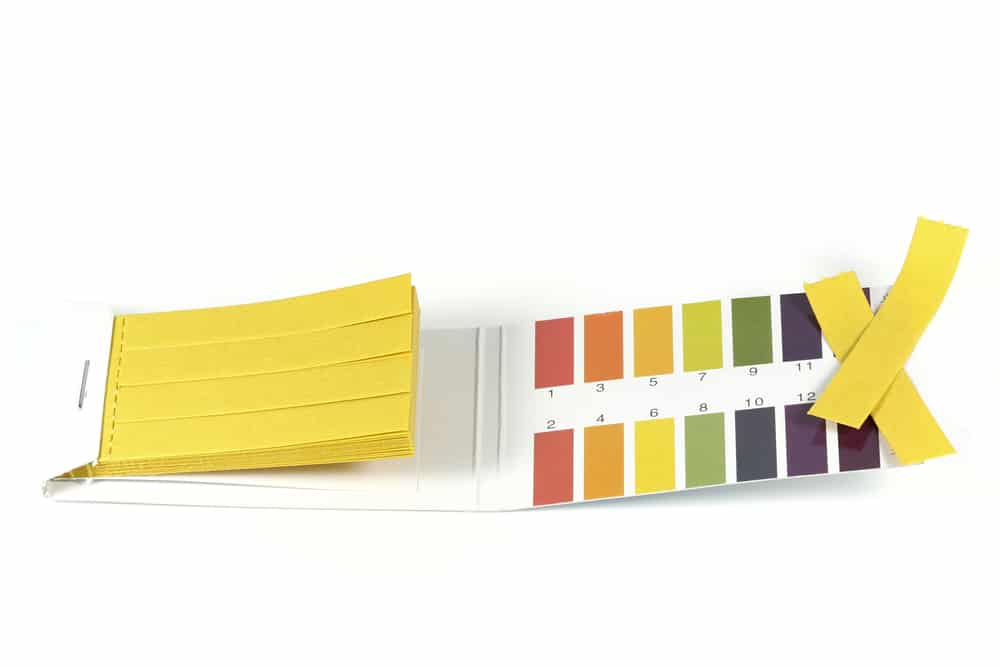
Ph strips use a scale of 14 to measure the acidity of liquids, with seven being neutral. Pure water is a neutral liquid and should register seven on the Ph strip scale. The higher the numbers get on the Ph scale, the more alkaline the liquid.
The lower the numbers are on the Ph scale, the more acidic the liquid. Ph strips are a fast and easy way to determine the acidity level of your reverse osmosis water. When you soak the Ph strip in a liquid, its color will change based on where it falls on the acidity-alkalinity scale. Ph strips that fall between the 5.5 and 8.5 range are optimal for testing reverse osmosis water.
If you purchase strips that test all 14 Ph levels, it could be challenging to distinguish between the different tints to determine your water’s acidity level accurately. To test your water’s acidity using Ph strips, follow these steps:
- Choose a clean glass free of foreign contaminants that may affect the test
- Fill the glass with reverse osmosis water
- Tear off a Ph strip
- Briefly dip the Ph strip in the water
The amount of time you need to keep the Ph strip in the water will vary based on the brand. Some strips need to be held in the water for 20 seconds, others as little as one second.
2. Litmus Paper
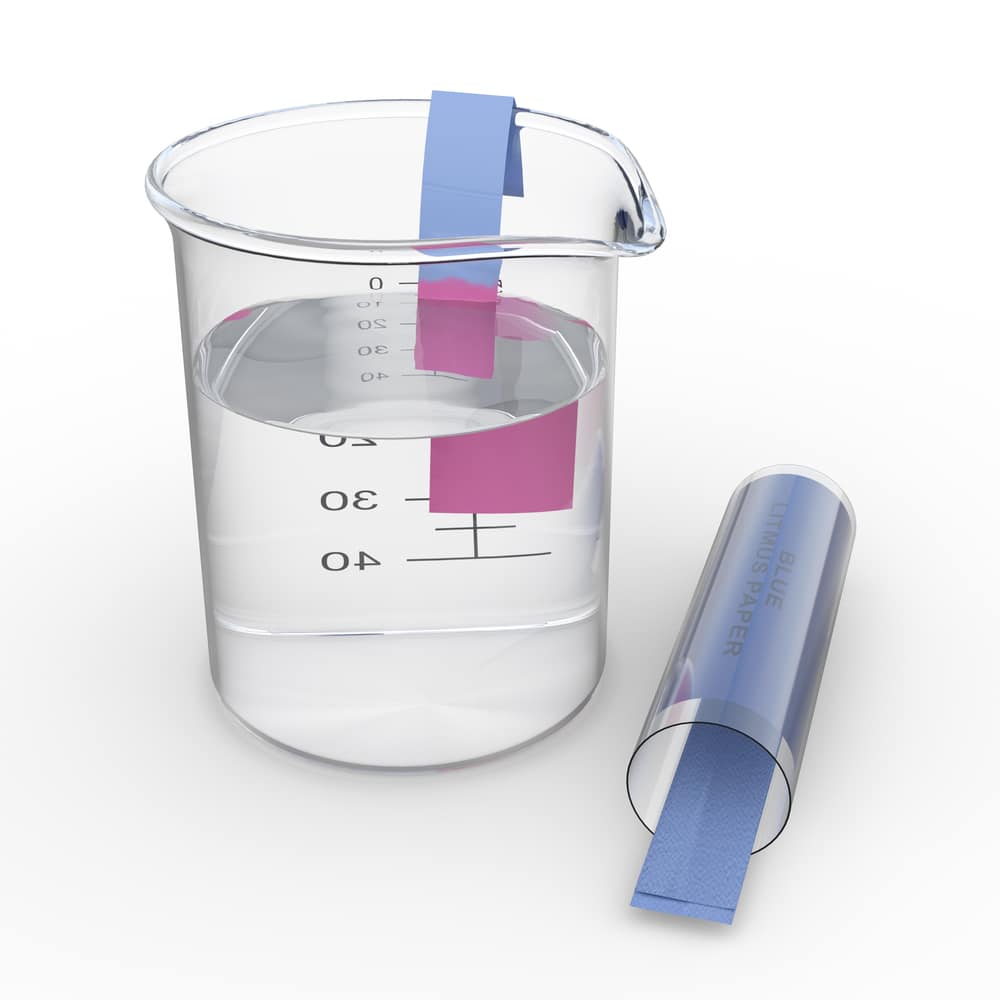
Although litmus paper works much like Ph stips, it is less accurate. Litmus paper comes in red and blue and only allows you to test whether your water is acidic or alkaline. Unlike with Ph strips, you won’t know where your liquid falls along the acidity-alkalinity spectrum.
If the water is alkaline or base, red litmus paper will turn blue. In contrast, if your water is acidic, blue litmus paper will turn red. If the water you’re testing is neutral or pure, the litmus paper won’t change color. Follow these steps to use litmus paper to test if your reverse osmosis water is acidic:
- Fill a clean glass with reverse osmosis water
- Be sure the water in the container is deep enough to cover the entire litmus strip
- Briefly dip the litmus paper test strip in the water
Since Litmus paper isn’t as sensitive as Ph strips, your reverse osmosis water may not register as acidic with this test.
3. Testing Facilities

If you want a professional to handle your water testing to ensure accurate results, you can take your reverse osmosis water to a local testing facility. Universities and government facilities in most American cities have water testing services that are available to the public.
You can send your water to these facilities for testing. The results you get from these facilities will be much more precise than the results from Ph strips and litmus paper.
4. The Red Cabbage Test
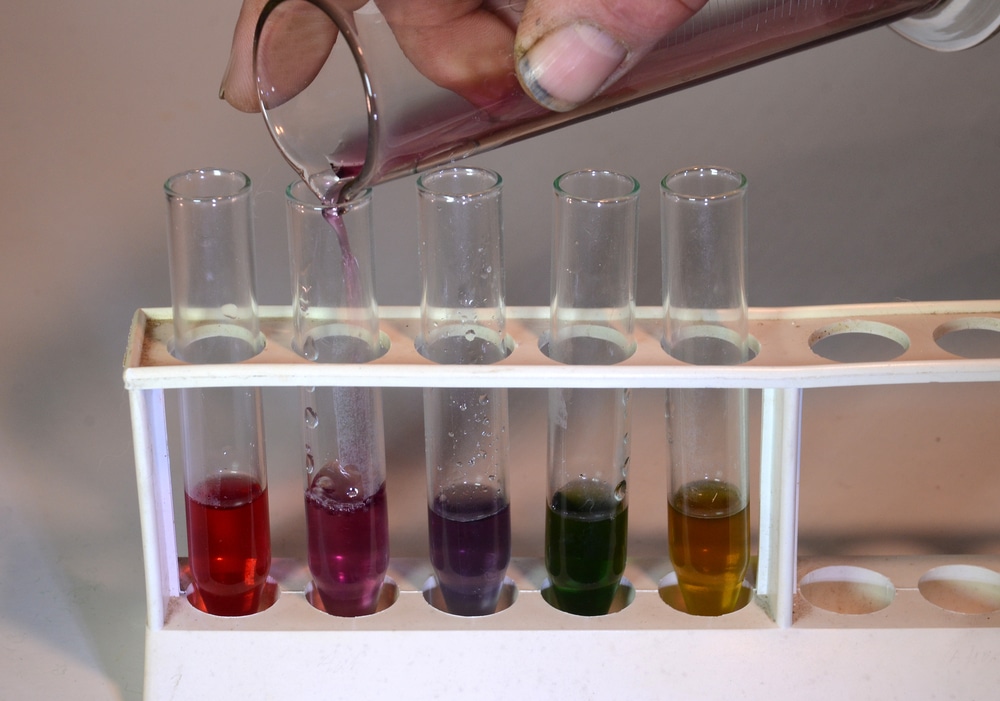
If you don’t have Ph strips or a Litmus testing kit, you can use fresh red cabbage and distilled water to make a Ph indicator. Anthocyanin is a water-soluble pigment flavin found in cabbage that gives it a red color.
For the price of red cabbage and distilled water, you can quickly determine the acidity of your water. The cabbage’s pigment will change color based on the pigment level of whatever you combine it with, including reverse osmosis water.
Follow these steps to use a red cabbage and distilled water to determine your water’s Ph level:
- Grate or blend the cabbage with distilled water
- Strain the water to remove any extra pieces of cabbage
- Pour the reverse water into the strained cabbage liquid
- Thoroughly stir it
If the resulting mixture turns red, your water is acidic. Since reverse osmosis water isn’t very acidic, you won’t see a bright red liquid like you would with lemon juice or vinegar.
How to Make Reverse Osmosis Water Alkaline
The only way to raise the Ph level of reverse osmosis water to make it more alkaline is to add minerals. The reverse osmosis process removes minerals from the water, so to increase the alkalinity of reverse osmosis water, it’s necessary to add back these minerals. Tap water’s Ph level comes from the calcium and magnesium bicarbonate it contains, making it slightly alkaline.
Acidic water typically has a low mineral salt content. Adding calcium and other minerals to reverse osmosis water is necessary to alkalize it. Keep in mind. There’s nothing wrong with consuming reverse osmosis water. Slightly acidic water is not harmful in any way, but if you want to alkalize your reverse osmosis water, adding minerals will allow you to do so.
Related: Distilled vs Reverse Osmosis Water Comparison
Final Thoughts
Reverse Osmosis has a slightly higher Ph level than pure water because its filtration process removes most of the minerals found in pure water. Once exposed to air, the Ph of RO water decreases from a Ph of 7 to 5.5 or lower, resulting in slightly acidic water.
The drop in Ph doesn’t affect the water’s quality, and reverse osmosis has a higher Ph level than many of the liquids we consume daily. There are many ways you can test the acidity of your reverse osmosis water to determine how acidic it is, including home tests or sending your water to a local facility for professional testing.

